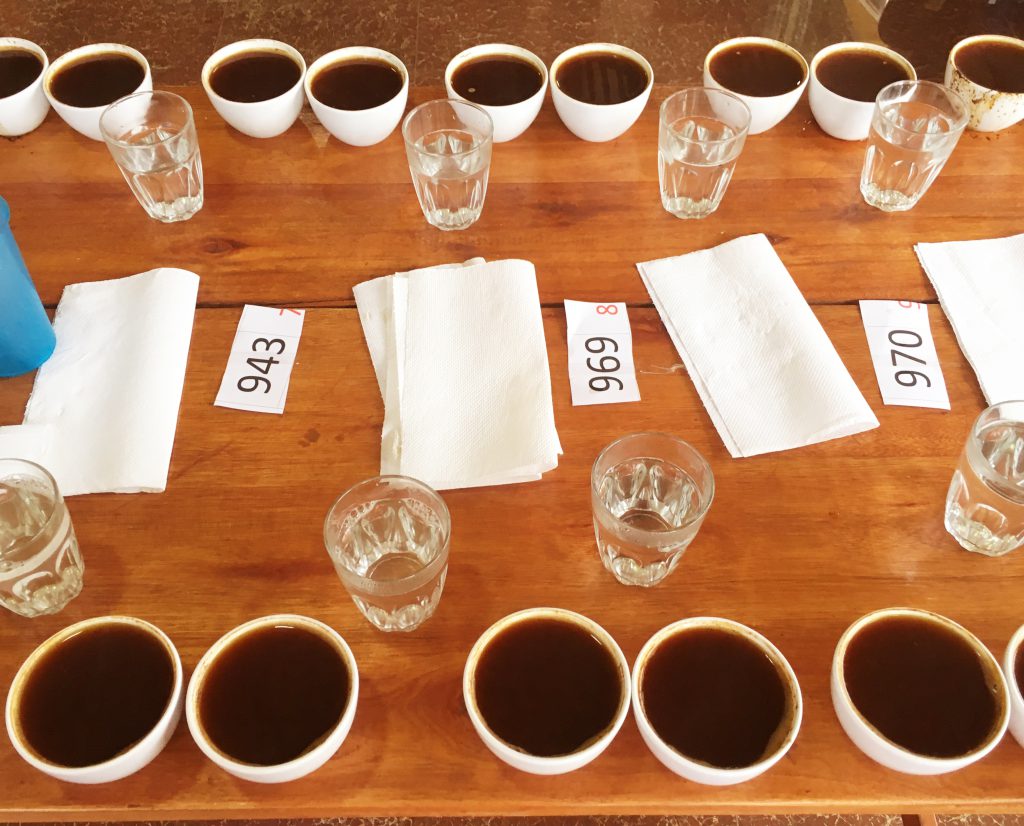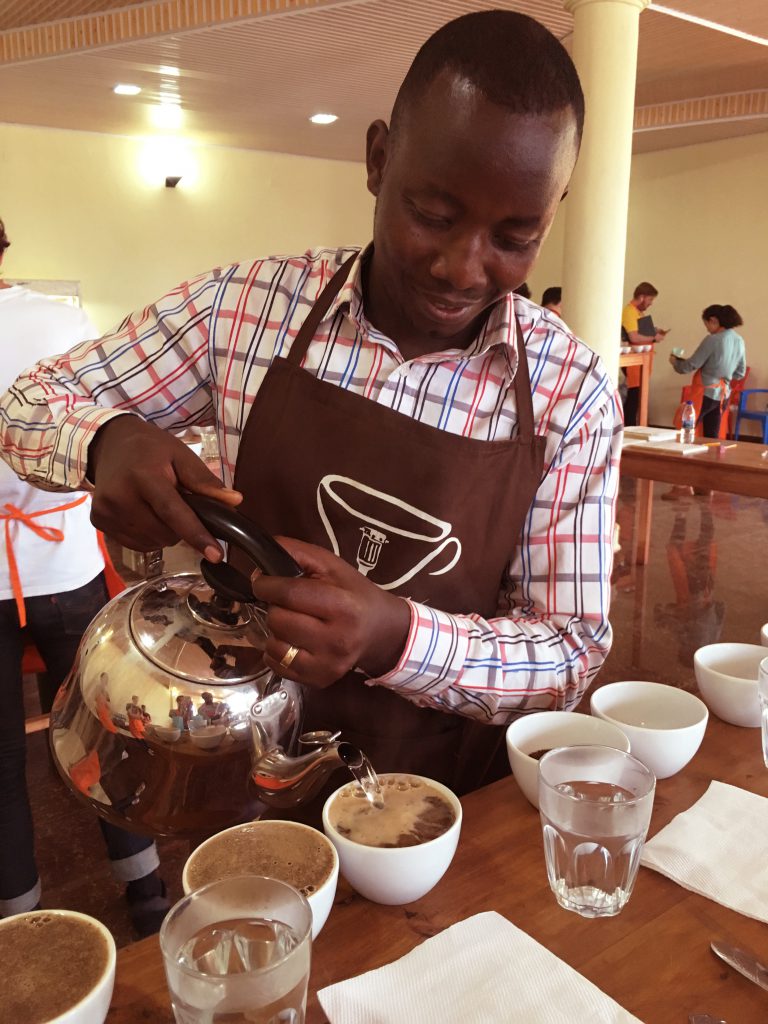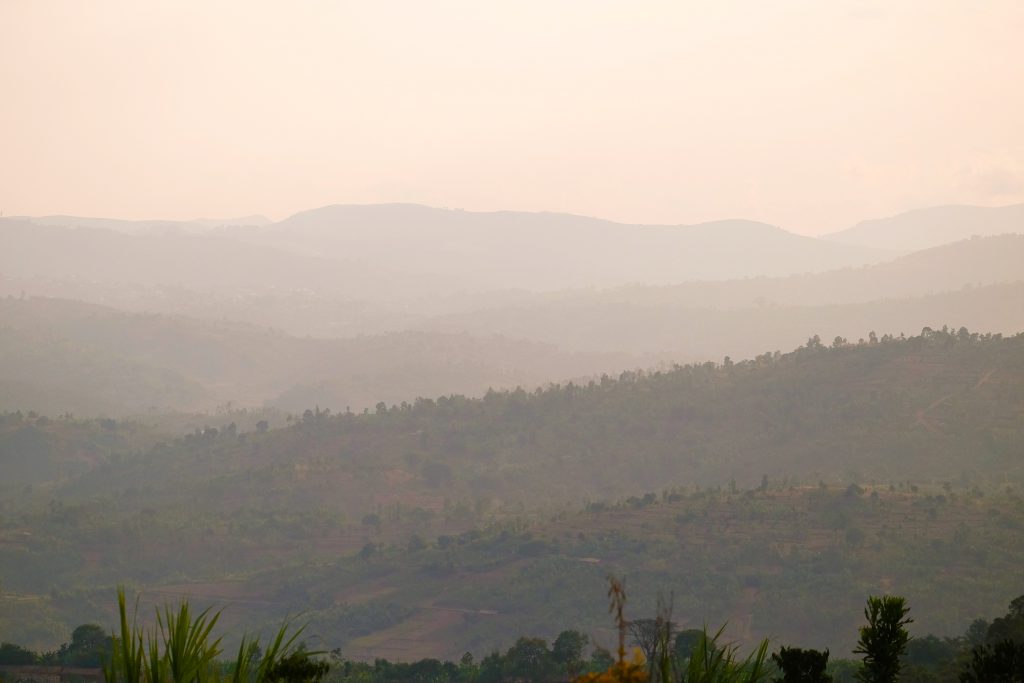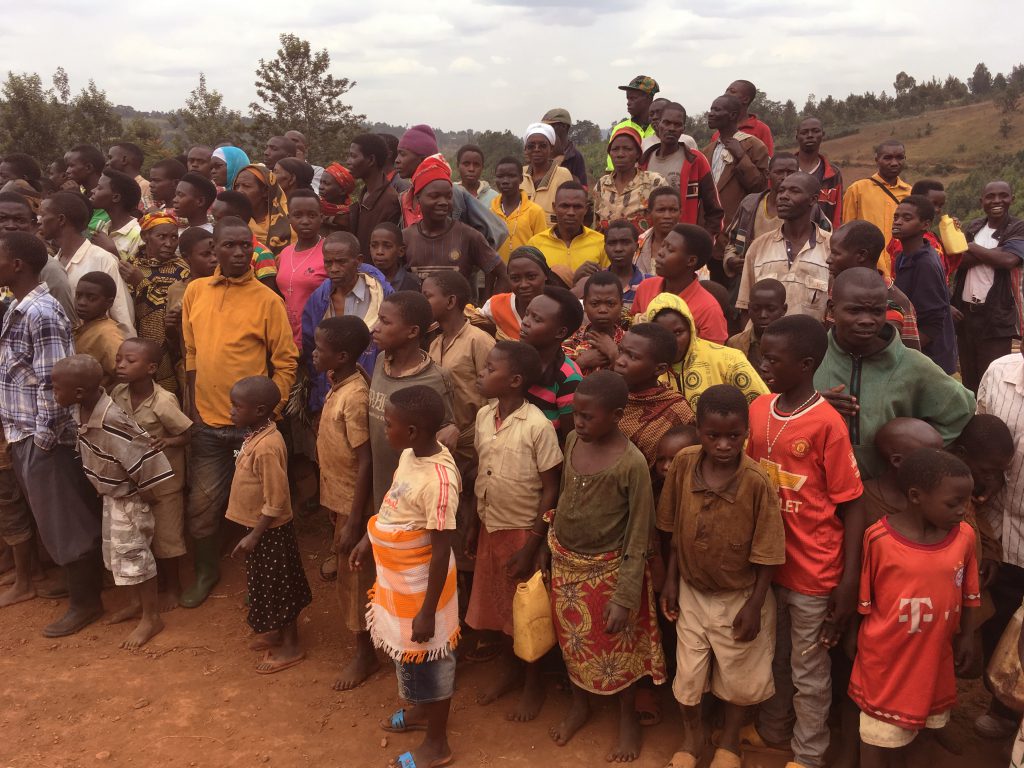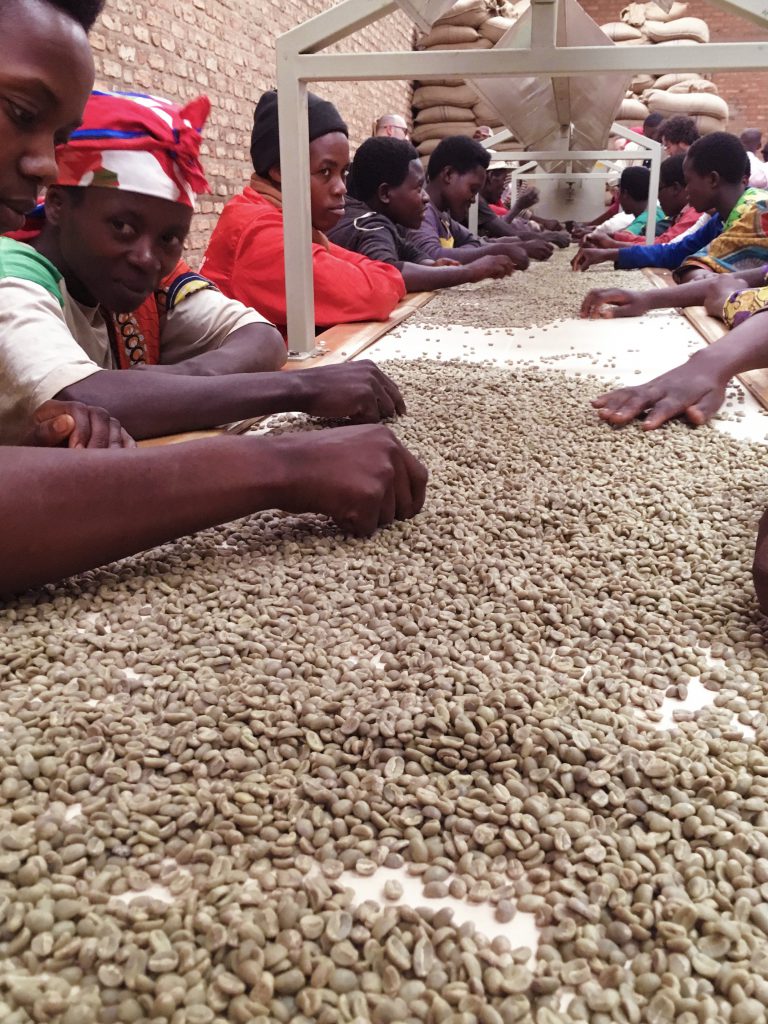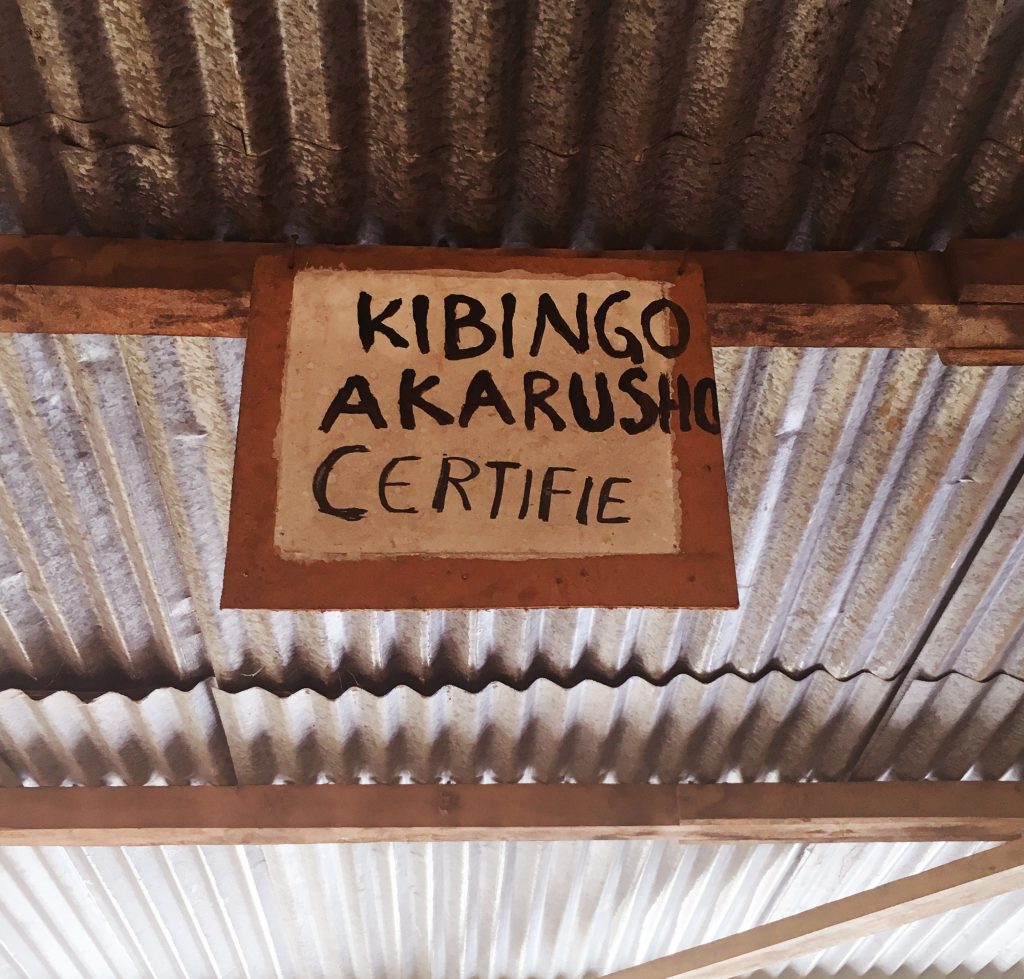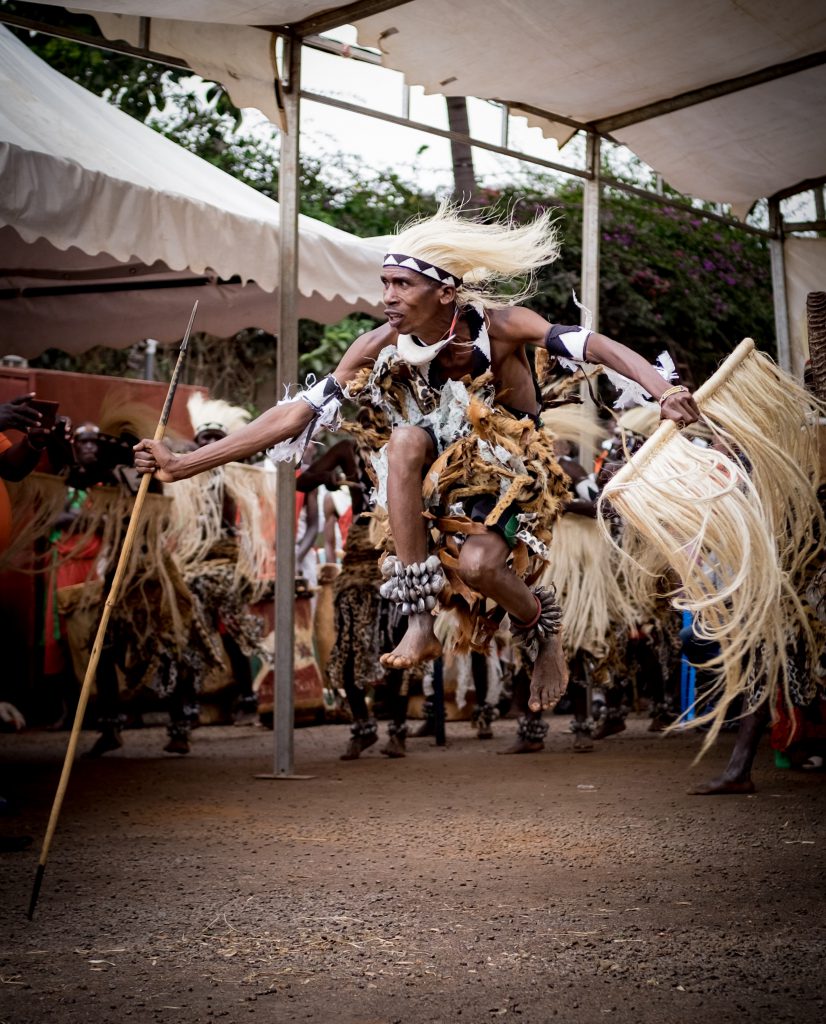(English version below)
A finales de Julio nuestra catadora y colaboradora Cássia Martinez nos ha representado como juez internacional en la 5ª Cup of Excellence (COE) de Burundi.
Cup Of Excellence 2017
Fueron 27 jueces, de los cuales 6 observadores, de 14 países diferentes evaluando muestras para este reconocido concurso. Cássia es la responsable de calidad en Cafés el Magnífico, juez internacional de la Taza de la Excelencia y Q grader. Cássia nos cuenta:
“Amahoro”
Paz
(Ampliamente utilizado como saludo)
Con respecto al café, todo parece estar floreciendo en Burundi desde hace 2 años. Es claro que el país lleva muchos más años cultivando y exportando su oro negro pero en cada visita a cada beneficio seco, estación de lavado, conversaciones con productores y exportadores, sus fechas claves de cambios importantes parecen haber sucedido en el 2015. Burundi es un país de un tremendo potencial donde todavía queda mucho por desarrollar. Si a día de hoy los cafés ya son espectaculares, no dudo que dentro de unos años se vean cifras cercanas a 100 en las puntuaciones del COE.
El concurso
En la fase de pre-selección 151 muestras fueron clasificadas por catadores nacionales. Como norma, solo 40 muestras son finalistas y tienen la oportunidad de ser evaluadas por el equipo de jueces internacionales. Sin embargo, tanta era la calidad de tazas de los cafés de Burundi este año que hubo 18 muestras puntuadas entre 86 – 87 puntos (Calidad COE) que se quedaron fuera de la lista final.
“Ikawa Iryoshe” – Café delicioso
Entendiendo las puntuaciones
Las puntuaciones funcionan de la siguiente manera:
< 80 Café Comercial
80 – 85 Cafés de Especialidad (Specialty)
86 – 90 Selección de la Taza de la Excelencia (COE)
> 90 Premio Presidencial – El Mejor de los Mejores
Hasta el día de hoy, los objetivos de la Taza de la Excelencia han sido
-Construir una reputación para el país productor
-Encontrar los mejores café
-Identificar diferentes perfiles de taza
-Familiarizar a los compradores sobre país de origen y sus mejores caficultores
-Construir relaciones entre productores y consumidores
Burundi fue uno de los 5 países del Proyecto Gourmet original en 1999. Fue este mismo proyecto el que organizó la primera competición en Brasil que eventualmente se convirtió en la Taza de la Excelencia. Este año ya se celebra la 110ª edición de la COE y nuevos objetivos se están cocinando. ¡Algunos de nuestros descriptores de sabor fueron caramelo, naranja, chocolate, grosella negra y miel!
El País
Las colinas de Ngozi (foto de Danny Pang)
Burundi es un pequeño país del África Oriental en forma de corazón que alberga a sus 12 millones de habitantes. Esta región de África es conocida por sus cafés de alta calidad y Burundi no es una excepción. Además, el café representa el 40% de las exportaciones del país, lo que eso se traduce en un ingreso anual de U$D 46 millones.
Gran parte de su territorio ofrece excelentes condiciones para el cultivo de cafés excepcionales y exóticos: miles de colinas con gran altitud, suelos volcánicos ricos en nitrógeno, lluvias abundantes (1,200 mm anual), temperaturas adecuadas y un varietal con pedigrí (el Bourbon).
Caficultores y sus familias a nuestra espera en la Estación de Lavado Rutobo en Kiremba – Ngozi.
En Burundi no existen grandes plantaciones. El café es cultivado en pequeñas fincas inferiores a 1ha (una media de 200 cafetos por productor) y las cerezas de propiedad familiar se vende a la estación de lava do más cercana. Esto representa alrededor de 700,000 familias caficultoras que también labran una agricultura de subsistencia cultivando trigo, maíz, arroz, plátano, etc. ya que el café es un ingreso puntual dentro de su renta anual.
Seleccionando cafés en el beneficio seco Horamama – Kayanza
El 100% del café de Burundi es cosechado a mano y secado al sol en parihuelas elevadas, aunque de momento solo el 5% de su producción es considerada de especialidad (Specialty). La mayoría de los cafés son procesados con doble lavado o doble fermentación, lo que le da gran nitidez y sabores brillantes.
Danzarín en la ceremonia de entrega de premios (foto de Danny Pang)
¡El café ganador: 90,45 puntos!
Estación de lavado Kibingo – Kayanza
El primer puesto del concurso, un café consistente y dulcísimo con notas a cereza, almendras y chocolate, acidez cítrica, cuerpo aterciopelado y un posgusto muy prolongado, sobresalió obteniendo la distinción de Premio Presidencial (superior a 90 puntos).
Marc Manirakiza, joven agrónomo de la Universidad de Bujumbura (capital), es uno de los principales responsables por el correcto funcionamiento de la estación de lavado Kibingo en la provincia de Kayanza, propiedad de la exportadora Greenco. Construida en 1986, Kibingo está a 1.890 msnm y es la estación más alta entre las 13 de propiedad de Greenco (todas con certificación 4C y UTZ).
Creo que vale la pena mencionar que los 5 primeros puestos y 13 de los 23 ganadores COE (superior a 86 puntos) son lotes de las estaciones de Greenco.
Cássia con Marc Manirakiza de Kibingo
Kibingo tiene 7 trabajadores fijos y otros 80 durante la cosecha. Compra cafés directamente de 3.500 caficultores y 21.000 retoños en su vivero está esperando la madurez para ser plantados. ¡El lote ganador es Lavado aunque ¡Kibingo ya está produciendo Honeys y Naturales!
Los tanques de fermentación y las parihuelas (vacías) de Kibingo
La pre-selección de las cerezas cuando llegan a la estación es considerada el trabajo más importante de todo el proceso. Tienen agua de manantial (del mítico Nilo) para el lavado del café que fluye a cada etapa del beneficio por gravedad. Tanques de decantación permiten filtrar el agua antes de ser devuelta a su curso natural utilizando el mucílago residual como compost. De hecho, todos los desechos generados durante el despulpado son convertidos en fertilizantes orgánicos.
Sobre la región Kayanza
La región de Kayanza se encuentra en el norte del país, cerca de la frontera con Ruanda. Es conocida sobre todo por ser la fuente del río Nilo, un agua singular que se utiliza para procesar las cerezas en todos los beneficios húmedos vecinos. Esta es probablemente una de las muchas razones por la cual los cafés de esta región siempre están entre los campeones en el prestigioso Cup of Excellence.
Sobre la región Ngozi
La provincia de Ngozi también se encuentra al norte de Burundi. Muchos caficultores de la región están registrados en las estaciones de lavado de Greenco y están organizados en grupos de 30 encabezados por un agricultor líder que actúa como portavoz para facilitar la comunicación y organización con las estaciones de lavado. El café que se cultiva aquí tiene un nivel de acidez muy pronunciado que se combina con una dulzura que lo equilibrada a la perfección.
Separadoras de defectos en el Beneficio seco Horamama, Kayanza.
Otras Regiones Cafeteras de Burundi
Menos conocidas pero muy prometedoras están otras 4 regiones productoras de café del país: Kirundo, Muyinga y Bubanza al norte y Gitega en el centro del país.
Danzarín en la ceremonia de entrega de premios (foto de Danny Pang)
¡El segundo lugar 90,40 puntos!
Estación de lavado Nzove – Ngozi
El segundo ganador del concurso, también con Premio Presidencial era mi café preferido entre los 40. También de propiedad de Greenco, Nzove fue construída en 1992 a 1.530 msnm en la Comuna de Mwumba en la provincia de Ngozi. El nombre ‘Nzove’ se deriva de los rebaños de elefantes (inzovu en Kirundi) que solían vivir en las colinas circundantes.
La estación de lavado compra cerezas de más de 2.400 caficultores locales distribuidos en las 12 colinas vecinas y durante la temporada Nzove procesa más de 800 toneladas de café.
En taza, este café es dulcísimo, tiene una acidez brillante y compleja como zumo de uva, licor de cassis, fruta de la pasión, notas florales, un cuerpo aterciopelado y un final muy prolongado. Perfectamente equilibrado!
¡Ha sido duro juzgar entre tantos cafés extraordinarios!
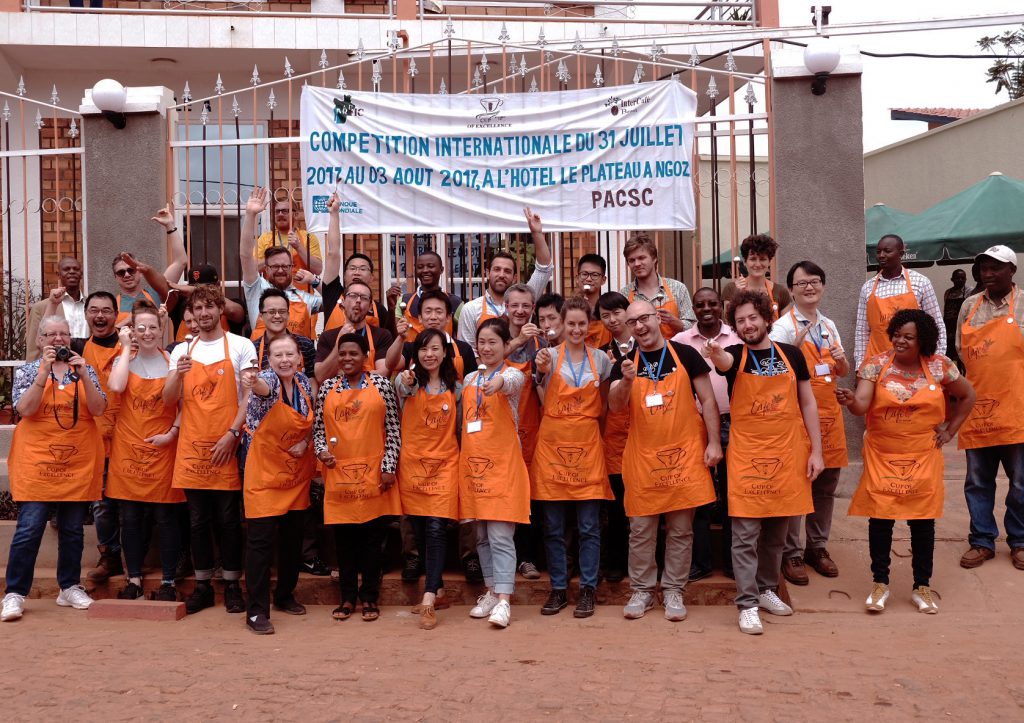 Equipo de jueces internacionales, Sherri Johns como Juez principal.
Equipo de jueces internacionales, Sherri Johns como Juez principal.
“Murakoze Cane Burundi”
Muchas gracias Burundi
“Tuzosubira vuba”
Nos vemos pronto
-English version
Cup Of Excellence 2017
At the end of July our cupper and collaborator Cássia Martinez has represented us as an international judge in the 5th Cup of Excellence (COE) of Burundi. There were 27 judges, of whom 6 observers, from 14 different countries evaluating samples for this renowned contest. Cássia is responsible for quality control at Cafés el Magnífico, international judge of the Cup of Excellence and Q grader. Cássia tells us:
“Amahoro”
Peace
(Widely used as a greeting)
Regarding coffee, everything seems to be flourishing in Burundi for 2 years now. It is clear that the country has been cultivating and exporting its black gold for many more years, but every visit to every dry mill, washing station, talks with producers and exporters, its key dates for major changes appear to have happened in 2015. Burundi is a country of tremendous potential where much remains to be done. If nowadays the coffees are already spectacular, it wouldn’t surprise me if in a few years figures close to 100 will be seen in the COE scores.
The Competition
In the pre-selection phase 151 samples were classified by national cuppers. As a rule, only 40 samples are finalists and have the opportunity to be evaluated by the team of international judges. However, such was the cup quality of Burundi coffees this year that there were 18 samples scoring between 86 – 87 points (COE Quality) that were left out of the final list.
“Ikawa Iryoshe” – Delicious Coffee
Understanding the scores
The scores work as follows:
< 80 Commercial Coffee
80 – 85 Specialty Coffee
86 – 90 COE Selection
90 Presidential Award – Best of the Best
To this day, the objectives of the Cup of Excellence have been:
Build a reputation for the producing countr
Find the best coffees
Identify different cup profiles
Familiarize buyers to origin and their best coffee growers
Build relationships between producers and consumers
Burundi was one of the 5 countries in the original Gourmet Project in 1999. It was this same project that organized the first competition in Brazil that eventually became Cup of Excellence. This year they are already celebrating the 110th edition of the COE and new objectives are being cooked. Some of our flavour descriptors were caramel, orange, chocolate, black currant and honey!
THE COUNTRY
The hills from Ngozi (foto by Danny Pang)
Burundi is a small heart-shaped East African country that is home to 12 million people. This region of Africa is known for its high quality coffees and Burundi is no exception. In addition, coffee accounts for 40% of the country’s exports, which translates into an annual income of US $ 46 million.
Much of its territory offers excellent conditions for the cultivation of exceptional and exotic coffees: thousands of hills with high altitude, volcanic soils rich in nitrogen, abundant rains (1,200 mm annual), suitable temperatures and a varietal with pedigree (Bourbon).
Coffee growers and their families waiting for us at the Rutobo Washing Station in Kiremba – Ngozi.
There are no large plantations in Burundi. The coffee is grown on small farms smaller than 1ha (an average of 200 coffee trees per producer) and family-owned cherries are sold to the nearest washing station. This represents around 700,000 coffee-growing families who also cultivate subsistence agriculture such as wheat, maize, rice, bananas, etc.
Selecting coffees at Horamama dry mill – Kayanza
100% of Burundian coffee is hand-harvested and sun-dried in raised beds, although only 5% of its production is considered to be Specialty. Most coffees are double washed or double fermented, which results in very clean coffees with bright flavours.
Dancer at the Award Ceremony (foto by Danny Pang)
THE WINNER COFFEE: 90,45 POINTS!
WASHING STATION KIBINGO – KAYANZA
The first place coffee, a consistent and sweet coffee with cherry, almonds and chocolate notes, citric acidity, velvety body and a lingering aftertaste, stood out obtaining the distinction of Presidential Award (superior to 90 points).
Marc Manirakiza, a young agronomist at the University of Bujumbura (capital), is one of the main responsible for the correct functioning of the Kibingo washing station in the province of Kayanza, owned by the exporter Greenco. Built in 1986, Kibingo is at 1.890 masl and is the highest station among Greenco’s 13 properties (all with 4C certification and UTZ).
I think it is worth mentioning that the top 5 places and 13 of the 23 COE winners (exceeding 86 points) were lots of Greenco’s stations.
Cássia with Marc Manirakiza from Kibingo
Kibingo has 7 permanent workers and another 80 during the harvest. They buy coffees directly from 3,500 coffee growers and 21,000 baby trees from their nursery are waiting for its maturity to be planted. The winning batch is a washed coffee although Kibingo is already producing Honeys and Naturals!
Fermentation tanks and (empty) raised beds from Kibingo
The pre-selection of the cherries when they arrive at the station is considered one of the most important works of the whole process. They have spring water (from the mythical Nile) that flows through each stage of the process by gravity to wash the coffees. Decantation tanks allow water to be filtered before being returned to its natural course using the residual mucilage as compost. In fact, all waste generated during pulping are converted into organic fertilizers.
About Kayanza Region
The Kayanza region is located in the north of the country, near the border with Rwanda. It is known mostly for being the source of the Nile River, an unique water that is used to process cherries in all the neighbouring wet mills. This is probably one of the many reasons why the coffees of this region are always among the champions in the prestigious Cup of Excellence.
About Ngozi Region
Ngozi Province is also located in the north of Burundi. Many coffee growers in the region are registered at Greenco’s washing stations and are organized into groups of 30 headed by a leading farmer who acts as a spokesperson to facilitate communication and organization with the washing stations. The coffee grown here has a very pronounced acidity level perfectly balanced with its sweetness.
Coffee sorters at the Horamama dry mill, Kayanza.
Other Coffee Regions of Burundi
Less known but very promising are 4 other coffee regions of Burundi: Kirundo, Muyinga and Bubanza in the north and Gitega in the center of the country.
A dancer at the Award Ceremony (foto by Danny Pang)
THE SECOND PLACE 90.40 POINTS!
WASHING STATION NZOVE – NGOZI
COE’s second place, also with Presidential Award was my favourite coffee out of the top 40. Also owned by Greenco, Nzove was built in 1992 at 1.530 masl in the Mwumba Commune in Ngozi province. The name ‘Nzove’ is derived from the herds of elephants (inzovu in Kirundi) that used to live in the surrounding hills.
The washing station buys cherries from more than 2.400 local coffee growers distributed around the 12 neighbouring hills and during the season Nzove processes more than 800 tons of coffee.
This coffee is sweet, has a bright and complex acidity like grape juice, cassis liqueur, passion fruit, floral notes, a velvety body and a very long aftertaste. Perfectly balanced!
It has been hard to judge among so many extraordinary coffees!
The team of international judges, Sherri Johns as Head Judge.
“Murakoze Cane Burundi”
Thank you very much Burundi
“Tuzosubira vuba”
See you soon
